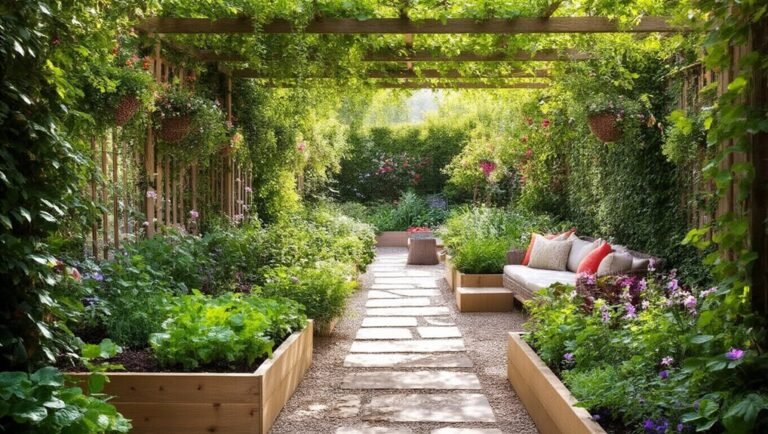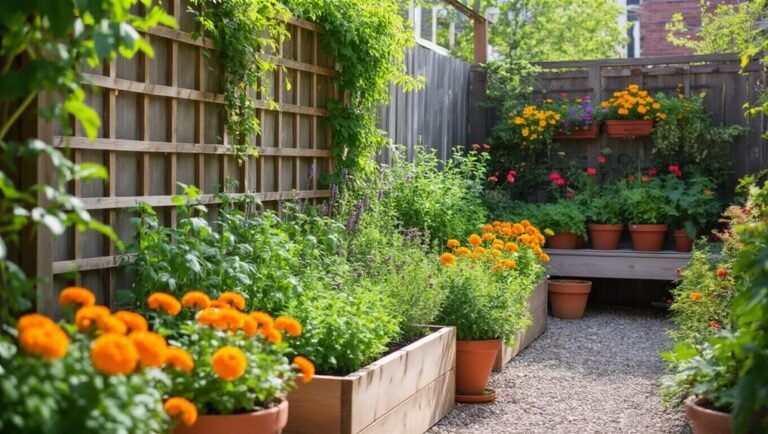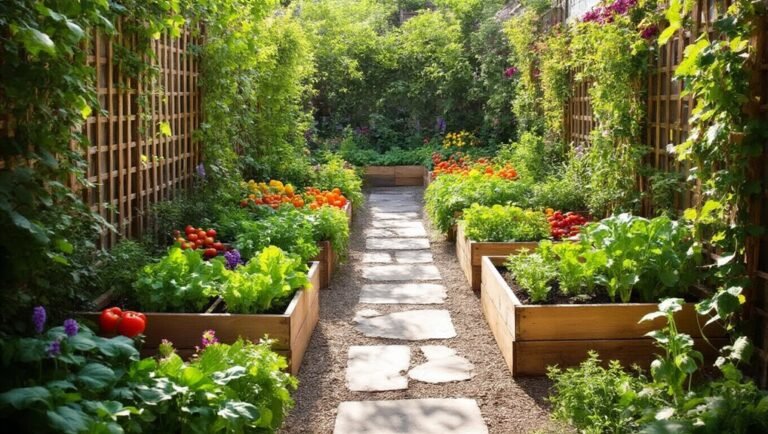To grow blue flowers at home, start by choosing varieties that suit your climate and soil type, like delphiniums for cooler areas or blue salvia for warmth. Prepare your soil by clearing debris and testing pH; aim for 6.0 to 7.0. Plant in spring or fall, ensuring good drainage and proper spacing. Keep the soil moist and check for pests regularly. With careful planning and attention, you can create a stunning blue flower garden. Discover more tips for success!
Key Takeaways
- Choose blue flower varieties suited to your climate, such as Delphiniums for cooler areas and Blue Salvia for warmer zones.
- Prepare your soil by clearing debris, testing pH, and enriching with organic compost and mulch for moisture retention.
- Plant in early spring or fall, ensuring holes are twice the width of the root ball and spaced for air circulation.
- Water consistently to keep soil moist, and mulch around plants to suppress weeds and retain moisture.
- Regularly check for pests, prune spent flowers, and fertilize every few weeks to promote healthy growth.
Choosing the Right Blue Flower Varieties
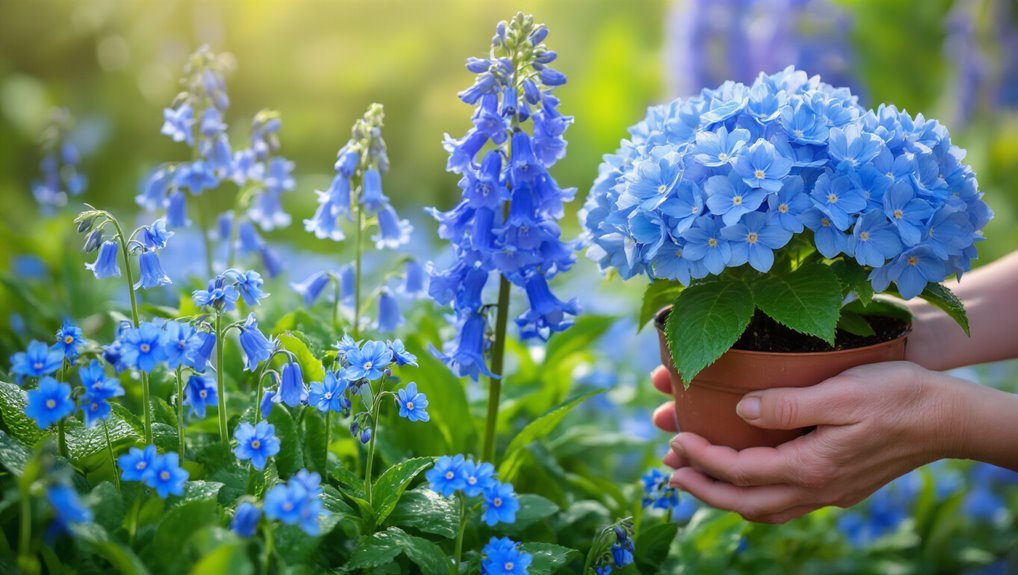
When you’re selecting blue flower varieties for your garden, it’s essential to consider factors like climate and soil type, as these can greatly influence your success. Choose varieties that thrive in your region; for instance, Delphiniums flourish in cooler climates, while Blue Salvia prefers warmer areas. Think about sunlight too—some flowers, like Lobelia, enjoy partial shade, while others, like Agapanthus, need full sun. Pay attention to the blooming season; combining early, mid, and late bloomers can ensure your garden stays vibrant all season long. If you want to optimize both organization and soil conditions, consider planting your blue flowers in raised garden beds for elevated results. Lastly, consider the height and spread of each plant to create an appealing arrangement. For best results, consider starting your blue flower varieties in grow bags, which can offer improved root aeration and drainage for healthier plants.
Preparing Your Garden Soil
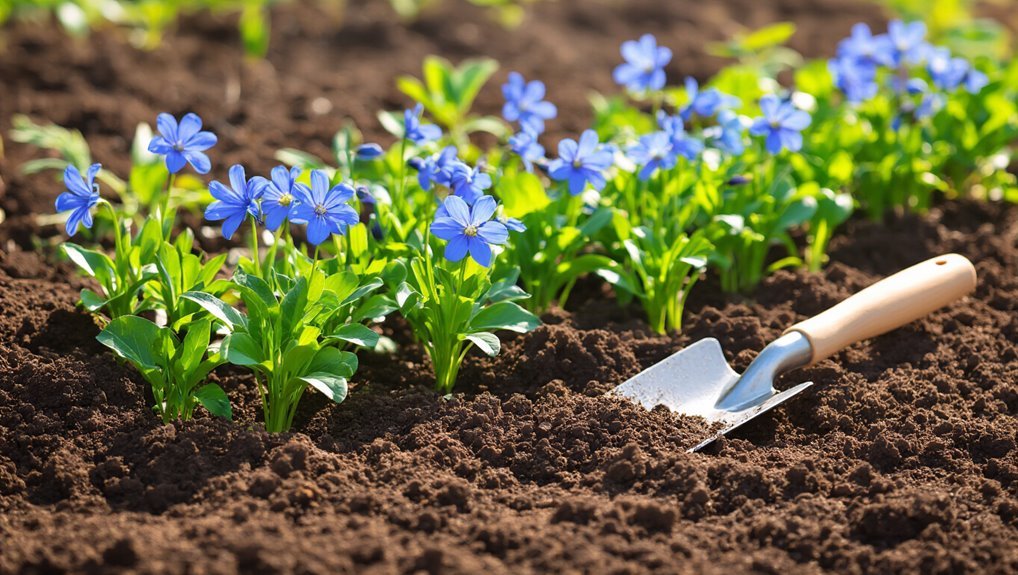
To cultivate vibrant blue flowers, start by prepping your garden soil. First, clear the area of any weeds, rocks, or debris that could hinder growth.
Next, test the soil pH; blue flowers often thrive in slightly acidic to neutral soil, around 6.0 to 7.0. If your soil is too alkaline, you can amend it with sulfur or organic matter.
After that, loosen the soil to improve drainage and aeration. This can be done using a garden fork or tiller. Adding a layer of organic mulch on top of your soil can help retain moisture, suppress weeds, and regulate soil temperature for optimal flower growth.
Incorporate organic compost to enrich the soil, providing essential nutrients for your blue flowers.
Finally, ensure the soil is moist but not soggy before planting. Using the best garden soil for your flower beds can further support healthy and thriving plants.
With well-prepared soil, you’re setting the stage for a flourishing garden of stunning blue blooms.
Planting Techniques for Success
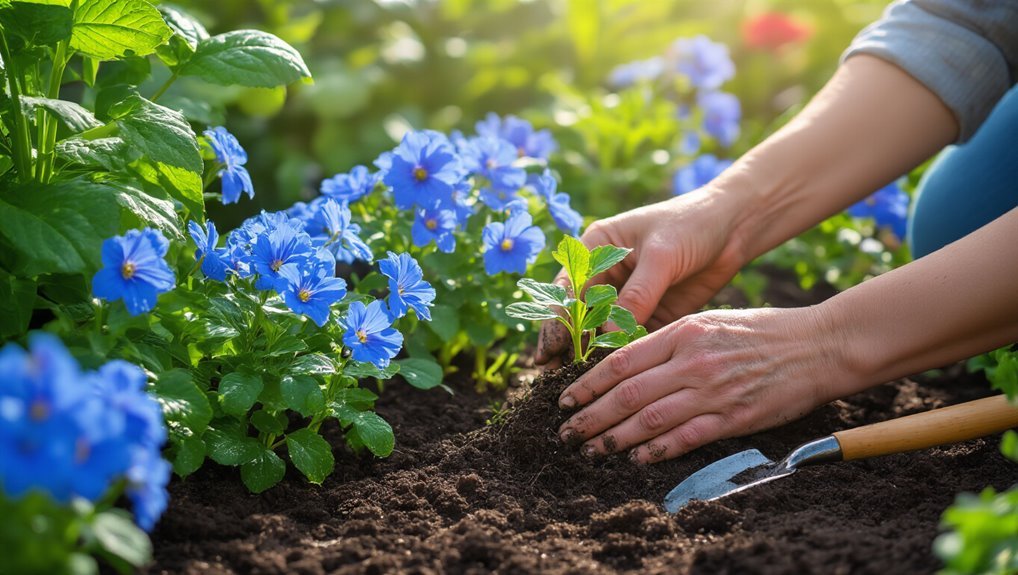
With your garden soil prepared, it’s time to focus on planting techniques that will ensure your blue flowers thrive.
Start by choosing the right planting time; early spring or fall is ideal for many blue varieties. Dig holes that are twice as wide as the root ball, ensuring good drainage. If you’re serious about nurturing your plants, consider using compost bins to create nutrient-rich compost that will enhance your soil’s fertility.
Place each plant in the hole, with the top of the root ball level with the soil surface. Space your flowers according to their mature size for proper air circulation.
Water gently to settle the soil around the roots, avoiding overwatering. Finally, consider using a mulch layer to retain moisture and suppress weeds.
If you want to give your blue flowers the best possible start, consider using seed starting kits designed to improve germination and early growth. These techniques will set the foundation for your beautiful blue blooms to flourish in your garden.
Care and Maintenance for Blue Blooms
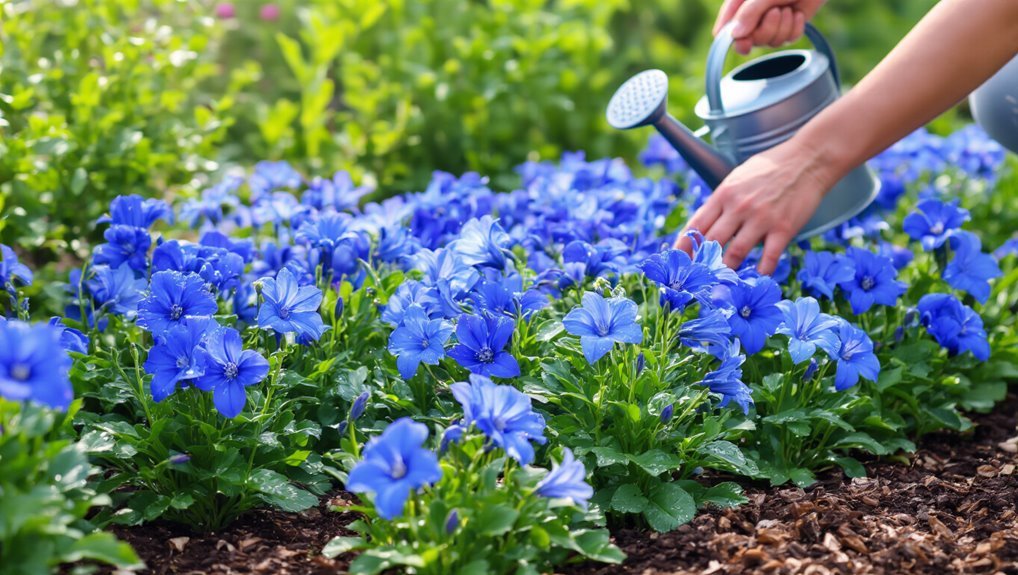
Caring for your blue blooms is essential for ensuring they remain vibrant and healthy throughout the growing season.
Start by watering your plants consistently, making sure the soil stays moist but not soggy. Mulching around the base helps retain moisture and suppress weeds. For extra defense against pests, you can incorporate Garden Pest Traps to catch insects before they damage your plants.
Regularly check for pests like aphids or spider mites; if you spot any, treat them promptly with insecticidal soap. Pruning spent flowers encourages new growth and keeps your blooms looking tidy.
Fertilize every few weeks with a balanced fertilizer to provide necessary nutrients.
Finally, be mindful of sunlight; most blue flowers thrive in full sun, so place them where they’ll get adequate light.
With attentive care, your blue blooms will flourish beautifully! For added protection against insects, consider using pest control products specifically designed to safely manage common garden pests.
Designing Your Blue Flower Garden Layout
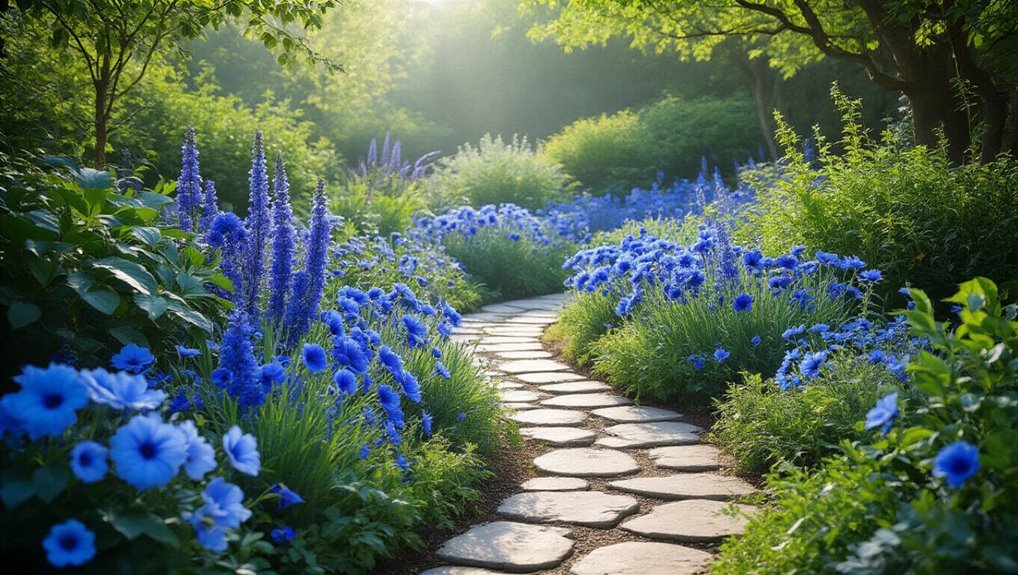
When designing your blue flower garden layout, consider how different heights and bloom times can create visual interest and harmony. To keep your gardening area tidy and accessible, use garden tool organizers for storing rakes, shovels, and other essentials.
Start by placing taller blue flowers, like delphiniums, at the back or center of your garden bed. Then, position medium-height blooms, such as bluebells, in the middle, and low-growing varieties, like lobelia, at the front. This layered effect draws the eye and highlights each flower’s beauty throughout the growing season.
- Mix various shades of blue for a dynamic look.
- Incorporate foliage plants for texture and contrast.
- Plan for continuous blooms by selecting species that flower at different times.
To make transporting soil, plants, or tools easier as you design your layout, consider using garden carts for added convenience and efficiency. With thoughtful planning, your blue flower garden will be a stunning and vibrant addition to your home.
Frequently Asked Questions
Can Blue Flowers Be Grown in Containers?
Yes, you can grow blue flowers in containers. Just choose a suitable pot, ensure proper drainage, use quality soil, and select the right blue flower variety. Water regularly and provide adequate sunlight for best results.
What Pests Are Common for Blue Flowers?
Did you know that over 50% of garden pests target flowers? For blue flowers, watch out for aphids, spider mites, and whiteflies. Regularly check your plants, and you’ll keep them healthy and thriving.
How Long Does It Take for Blue Flowers to Bloom?
It usually takes about 10 to 12 weeks for blue flowers to bloom after planting seeds. However, growth time can vary based on the specific flower type and growing conditions you provide.
Are Blue Flowers Safe for Pets?
You should always check specific blue flower types, as some can be toxic to pets. Common blue flowers like bluebells and delphiniums pose risks. Research each plant’s safety before introducing them to your home environment.
Can I Grow Blue Flowers Indoors?
Yes, you can grow blue flowers indoors! Choose suitable varieties like bluebells or forget-me-nots. Provide adequate light, moisture, and proper potting soil, and you’ll enjoy beautiful blooms right in your living space.
Conclusion
So, you’ve mastered the art of growing blue flowers at home—congratulations! Now, as you bask in the glory of your botanical achievements, remember that while your neighbors are busy with their mundane marigolds, you’re cultivating a veritable azure oasis. Just don’t forget to water those blooms, or you’ll end up with a garden that’s less “blue paradise” and more “drought-stricken disappointment.” Go ahead, embrace your floral superiority, but maybe keep the bragging to a minimum.
